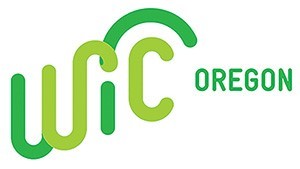 What is WIC and Why is it Important to Collect the Information?
Women, Infants, and Children (WIC) is a public health nutrition program that started in 1974. It is designed to help families improve their health outcomes through nutrition education, increased access to healthy foods, breastfeeding promotion and support, and referral services. In Oregon, about half of pregnant women and a third of all children under 5 are on WIC. As a healthcare professional, you have unique access to families that may want to learn about WIC.
WIC has gained a reputation for being the premier public health nutrition program. All WIC participants receive education that meets their specific needs, such as individual nutrition counseling, online resources, group sessions, infant feeding, breastfeeding, and prenatal nutrition. Studies, reviews and reports demonstrate that the WIC program is cost-effective in protecting or improving the health and nutrition status of low-income women, infants and children. Additionally, it has been documented in government and university research that WIC saves significant health care dollars.
Who is eligible for WIC? Eligible applicants can be pregnant women, breastfeeding women with an infant under 12 months of age, non-breastfeeding women through 6 months postpartum, infants under 12 months of age, and children between the ages of 1 and 5. Applicants must have income below the WIC income guidelines and have a health condition or diet issue that can be helped with nutritious WIC foods and nutrition education. Fathers, grandparents, foster parents or other guardians may apply for WIC for children in their care.
It is important for BIS to ask mom (if she does not initially fill out the WIC section of the parent worksheet) if she is receiving WIC. By providing this information, it can help improve data completeness and quality. Complete and accurate information on all sections of the parent worksheet helps many public health programs to understand the need for WIC. The information is used for analysis among partners within public health and at the National Center for Health Statistics (NCHS). WIC is one of NCHS requirements to have the tolerance level at 2.09% or below. It is important not to exceed this level. NCHS provides CHS with a monthly report and will require facilities to go back and amend records when the tolerance level has been exceeded.
For additional questions about the WIC program, please visit their website.
Paternity Affidavit (Form 45-21) Reminder
The grace period for when no processing fees will be accepted for Voluntary Acknowledgement of Paternity Affidavits (Form 45-21) has been extended from 14 days to 60 days from the child’s date of birth.
This form requires a notary to witness signatures and is given to unmarried mothers that do not sign a Voluntary Acknowledgement of Paternity (Form 45-31) in the hospital within 5 days of the birth of the child.
It is very important that these forms are returned quickly to CHS in order to promptly register the birth of the child. If the form is not received within the 60-day time frame, a $35 processing fee will be required.
We are currently below the targeted federal requirement for overall paternity establishment percentage. Your participation is essential in meeting this requirement.
If you are interested in scheduling an AOP Training, please contact our Vital Records Trainer at 971-673-1353.
BIS Training Certificates Due September 30, 2020!
Have you completed the required BIS Training package yet?
All existing birth information specialists and midwives must complete this training and submit their training certificates by email: chs.partnerservices@dhsoha.state.or.us or fax: 971-673-1202 by September 30, 2020.
If certificates are not received by this deadline, your OVERS account will be disabled.
For more information, contact our Vital Records Trainer at 971-673-1353.
What is a Freestanding Birth Center?
Freestanding birth centers offer a home-like environment in which to give birth and are not associated with a hospital. These births are usually attended by a midwife.
The Mother Health page in OVERS is where you can record whether or not the mother intended to give birth at a freestanding birthing center when they started labor. It is very important to make sure that these births are documented correctly in OVERS.
 We have seen cases where parents are selecting the wrong option on the Parent Worksheet.
“Did you go into labor planning to deliver at home or at a freestanding birthing center (excludes hospital birthing center)?”
It is possible that the parents didn’t understand the part in parenthesis that excludes hospital birthing centers. Please review the answer with the parents and select the correct option in OVERS for place of birth.
Selecting the correct option ensures that CHS has accurate information for our statistics department to create reports about where births are occurring and what type of attendant was present at the birth. The information is also needed to determine if women had gone into labor at home or a freestanding birth center and had to be transferred to a hospital due to complications.
|